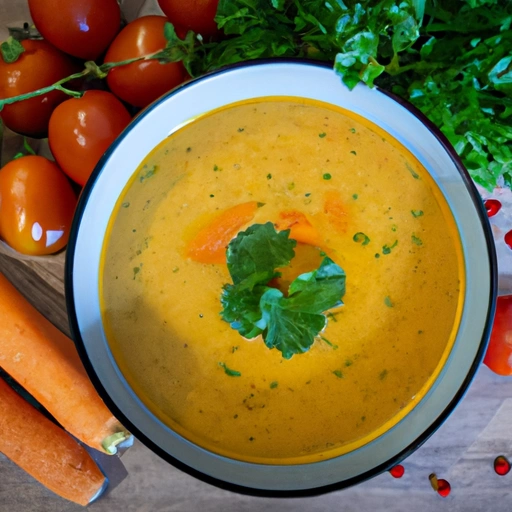Vegetable Soup
Description

Vegetable soup is a universal and beloved dish renowned for its versatility and healthful properties. It combines a variety of vegetables, herbs, and sometimes grains or legumes, simmered in a flavorful broth. Vegetable soup can be tailored to include seasonal produce and can be adjusted to meet dietary preferences or restrictions, making it a staple in kitchens worldwide.
Common uses
Vegetable soup is commonly used as a starter, a light meal, or a base for more complex dishes. It's also used for its therapeutic properties, often consumed during cold weather or when one is feeling under the weather to help boost the immune system.
Nutritional value
Calories
A typical serving of homemade vegetable soup can range from 50 to 150 calories (approx. 210 to 630 kJ), depending on the ingredients used.
Protein
Protein content in vegetable soup can vary, but it generally provides about 2 to 5 grams per cup (240 mL/8 fl oz).
Fat
Vegetable soup is typically low in fat, containing less than 3 grams per serving, unless oil, butter, or fatty meats are added.
Carbohydrates
Carbohydrates in vegetable soup are primarily from the vegetables themselves, with roughly 10 to 20 grams per cup.
Vitamins
Vegetable soup is a rich source of vitamins, including Vitamin A, C, and K, as well as several B vitamins, depending on the variety of vegetables used.
Minerals
Essential minerals such as potassium, magnesium, and iron are present in vegetable soup, contributing to its nutritional value.
Health benefits
Vegetable soup is known for its health benefits, such as providing essential nutrients, supporting weight management, improving digestion, and boosting immunity.
Potential risks
There are few risks associated with vegetable soup, but it's important to be mindful of sodium content, especially in store-bought versions, and the potential for food allergies depending on the vegetables used.
Common recipes
Recipes include classic vegetable soup, minestrone, vegetable beef soup, and creamy vegetable soups, among others.
Cooking methods
Vegetable soup can be simmered on the stove, cooked in a slow cooker, or made quickly in a pressure cooker.
Pairing with other ingredients
Vegetable soup pairs well with crusty bread, salads, sandwiches, and can be enhanced with toppings like cheese, herbs, or a dollop of sour cream.
Summary
Vegetable soup is a timeless and nutritious dish that transcends cultures and cuisines. It's a canvas for creativity in the kitchen, allowing for endless variations. Whether you're using the metric system (grams, liters) or American customary units (ounces, cups), vegetable soup can be made to suit any taste, dietary need, and occasion, making it a beloved dish for people worldwide seeking comfort and nourishment in their meals.